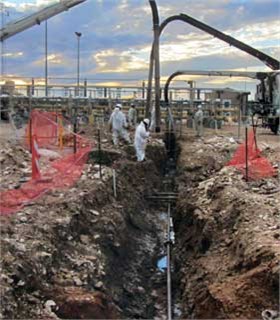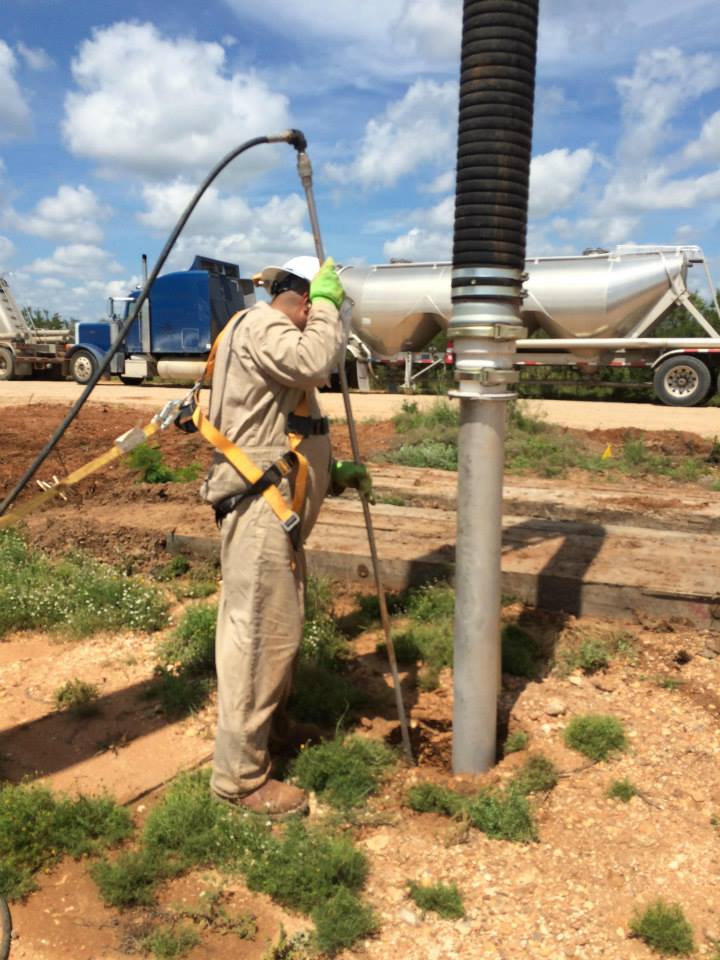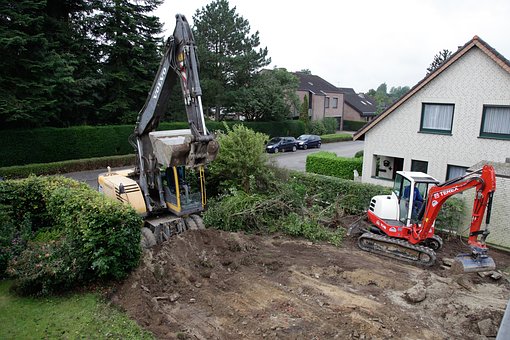Get This Report on Excavating Contractors
Wiki Article
About Concrete Contractors
Table of ContentsIndicators on Excavation Contractors Near Me You Need To KnowSome Known Details About Demolition See This Report about ExcavatorSome Of Concrete ContractorsEverything about Concrete Contractors


Scrapers or Pans dig deep into soil in one area, haul as well as dispose the dirt in an additional area (concrete contractors). It is tough to match the efficiency of scrapers for cut/fill soil procedure if the haul distance is less after that a mile. Scrapers are usually pulled by a rubber tire wheel tractor and also are often pushed via the cut area by a bulldozer.
There are lot of times that scrapes are not made use of for website grading and also a dump vehicle is used: the haul might be to long, the haul may go across roadways where scrapes are not allowed, difficult rock may be run into, tools availability, etc. Dispose trucks are in common use and probably require little discussion.
"Rock body" beds, on the other hand, have no tailgates as well as can discard any size rock, although their quantity capacity is diminished. Compaction Tools boosts the thickness of the soil and also in some situations provides a smooth, rolled surface area.
Indicators on Excavating Contractors You Should Know
From a basic examination pit to percussion drilling to core boring the owner has significantly extra pricey alternatives that yield increasingly better information regarding the website underground. For instance, the Owner on a 100,000 SF building project may authorize twenty dull places with split spoon dirt examples taken up until rock is reached and afterwards core examples of rock.Recognizing the kind and quality of rock (from the core samples) and location of rock (from the dirts boring) is a real advantage in jobsite planning. Conversely, the Proprietor of a 100,000 SF structure may make a decision to proceed with no geotechnical testing whatsoever. The choice about geotechnical screening is generally made by an Owner without any input from the Building and construction Manager.
An understanding of the approximate area of the rock helps the Construction Manager to intend the sequence of actions following rock excavation. If rock is in one edge of a huge building task, for example, the earth excavation can start at the contrary end of the building in order to begin structure work soonest.
Beginning the structure job early would be a good suggestion if the rock could be eliminated by tearing. However, if the rock is very tough as well as needs substantial blasting, it may be prudent to hold structure job until the blasting is finished. The Construction Supervisor must work with these kinds of choices and utilize all the technical day available.
More About Trencher
Unidentified excavation stipulates that all rock or other landscape grading unforeseen materials (leaving out dangerous materials) encountered in the sitework will certainly be the obligation of the Contractor at no modification in agreement price. An unidentified excavation is simpler from a book-keeping point ofview as well as puts the duty for geotechnical problems onto the Sitework Professional.It's amazing go to website what a heavy rainfall can do to a building and construction project. Prior to the rainfall, the site may be dry, hefty tools successfully moving planet, the other professions efficiently executing their job.
In most locations of the globe, the Building Supervisor need to bear in mind a simple fact: IT WILL RAIN. Good planning can minimize the damage and interruption of a hefty rainfall to a jobsite. Typically the excavation and also grading is delegated the Sitework Contractor (and also their Foremen is responsible to monitor as well as guide the heavy equipment and operators).
For That Reason the Construction Manager must be continuously mindful of what rainfall will certainly do to the job site. It is not uncommon for the Sitework Supervisor to function their heavy equipment for optimal performance as well as hope it doesn't rainfall. Among the most effective methods to get ready for rainfall is to slope all grades to drain and also to smooth rolled the surface area prior to a rain.
The 5-Second Trick For Excavation Companies
The Construction Supervisor must be well-balanced sufficient to guarantee that heavy rain does not quit excavation equipment working on the project longer than required. Daily discussions with Sitework Foremen may be required to achieve this goal. Any kind of time excavation is called for listed below the existing aquifer on a task, the process of dewatering should be thought about.In a really natural dirt, the water takes a trip so slowly through the clay or silt that dewatering is not normally needed for the relatively brief time of excavation. Dewatering may be required for a solitary ground excavation or for an entire task site. The most usual dewatering techniques are trench drains, deep wells as well as well points.

Ground water seepage can additionally be reduced by cutoff techniques such as sheet stacking. The prices for dewatering can be incredible, including tools service, labor and also power (or fuel). High dewatering expenses have actually paled the revenue margins on much way too many tasks. The lots of variables listed here make the job of estimating dewatering costs very tough, as well as very inexact.
This option must always be thought about when assessing the possibility of dewatering. Certainly the choice is just feasible if gravity can run the water to reduced ground. Trench drains pipes can be reduced with a backhoe and also filled up with a rugged, granular material (# 4 rock for instance), but treatment must be exercised in selecting the water outlet type as well as area.
The Ultimate Guide To Concrete Contractors
A siphon, by meaning, uses air pressure to lug water from one elevation, up over a barrier, to a reduced elevation. The pipelines in a siphon system need to be airtight and also some ingenuity is often called for to completely load the siphon pipeline. The siphon pipe need to be full for the siphon to start.A deep well contains a pump, tube as well as an upright well casing. The pump intake is at the base of the well housing (usually some crushed rock is placed down there as a filter tool) (grading contractors). The water is inflated the hose, out of the well covering, and also to a suitable discharge location.
In a coarse sand, for instance, a huge area can be pumped to near the pump intake altitude. A much less permeable soil, on the various other hand, decreases the performance of a deep well. Considering that the pump is normally at the base of the deep well, there are no height limitations because of vacuum lift, and also deep wells can reduce the groundwater over 50 feet.
Under of the wellpoint there is a 2 foot long screen as well as shutoff, water jets out of this shutoff and also creates a hole into which the wellpoint pipe can be reduced. This opening is often made a larger diameter (for instance 10 inches) to enable for a crude sand backfill to help filter the water (mini excavator).
Report this wiki page